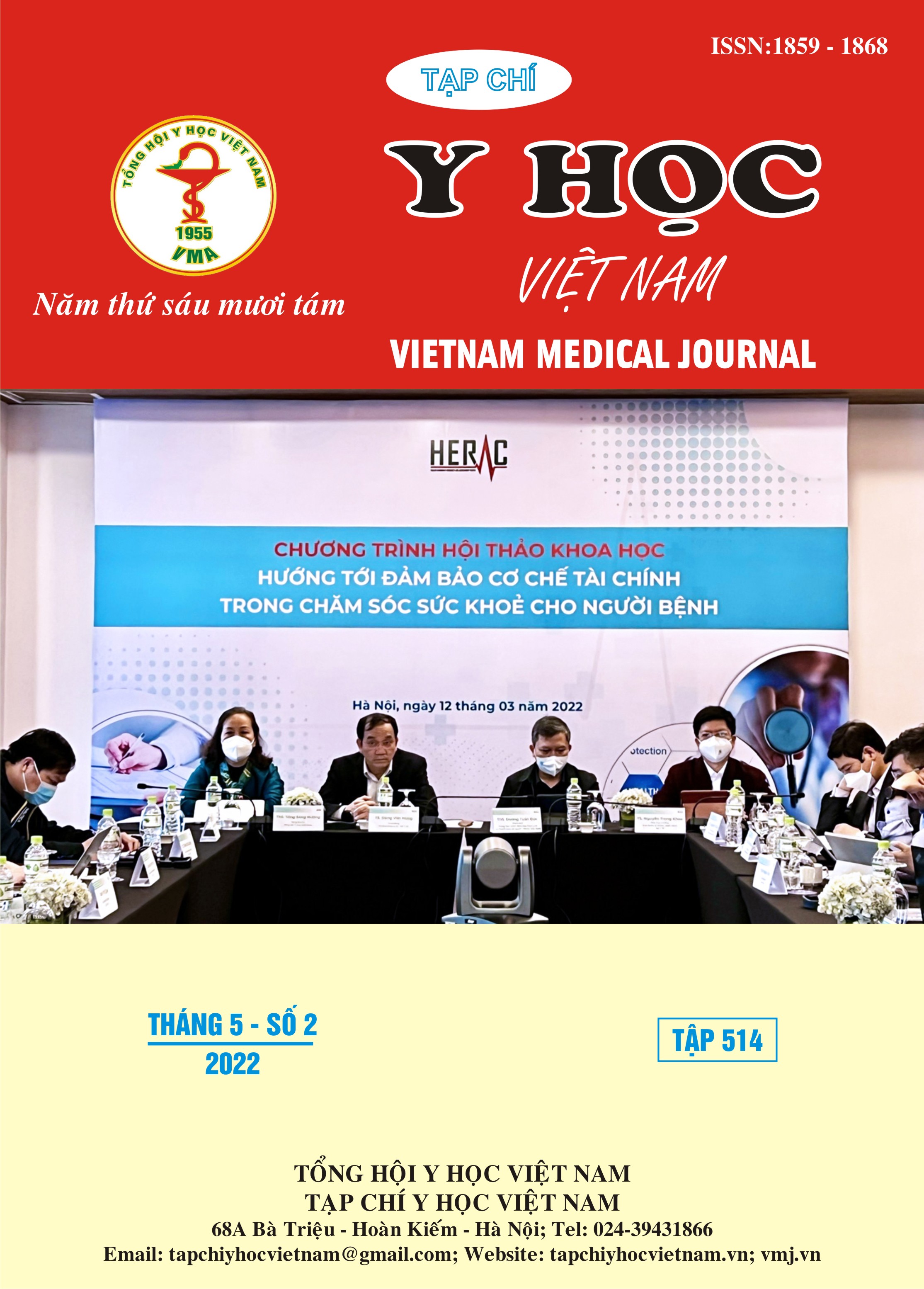THE ANALGESIC EFFECT OF UNILATERAL ULTRASOUND-GUIDED ERECTOR SPINAE PLANE BLOCK (ESPB) FOR MINIMALLY INVASIVE CARDIAC SURGERY
Main Article Content
Abstract
Objective:: To assess the safety and efficacy of the analgesic of unilateral erector spinae plane block (ESPB) in minimally invasive cardiac surgery (MICS). From November 2018 to July 2020, Subjects nad method: 30 patients aged 18-75, underwent minimally invasive cardiac surgery via the right thoracotomy with endoscopic support at the Vietnam National Heart Institute, Bach Mai Hospital. Ultrasound-guided right unilateral ESP catheter performed after general anesthesia for surgery, injected ropivacaine 0.5%; 20ml. At the end of surgery: patient received continuously ropivacaine 0.1% through the ESP catheter 0.2ml/kg/hour; combined with paracetamol intravenous infusion 1g every 6 hours; Patients were assessed for visual analogue scale (VAS) score at rest, during exercise at times within 72 hours after extubation, additional opioid consumption, and adverse events. Results: Effective in enhancing pain relief during surgery, the amount of fentanyl consumed was 212.51 ± 71.58 µg. Postoperative period the average VAS score at rest, and dynamic < 4; 5 patients (16.7%) needed additional intravenous PCA morphine, with the amount consumption in 24h, 48h, 72h, respectively: 4mg, 8mg, 14.2mg. In the study, there were no serious complications related to ESPB. Conclusion: ESPB provided effective analgesic for MICS via thoracic incision in reducing the VAS score and the morphine required. It is also a safe method with no severe ESPB-related complications.
Article Details
Keywords
Patient controlled analgesia intravenous morphine, analgesia, erector spinae plane block, minimally invasive cardiac surgery
References
2. Forero M., Adhikary S.D., Lopez H. và cộng sự. (2016). The Erector Spinae Plane Block: A Novel Analgesic Technique in Thoracic Neuropathic Pain. Reg Anesth Pain Med, 41(5), 621–627.
3. Tsui B.C.H., Fonseca A., Munshey F. và cộng sự. (2019). The erector spinae plane (ESP) block: A pooled review of 242 cases. J Clin Anesth, 53, 29–34.
4. Krishna S.N., Chauhan S., Bhoi D. và cộng sự. (2019). Bilateral Erector Spinae Plane Block for Acute Post-Surgical Pain in Adult Cardiac Surgical Patients: A Randomized Controlled Trial. J Cardiothorac Vasc Anesth, 33(2), 368–375.
5. Macaire P., Ho N., Nguyen T. và cộng sự. (2019). Ultrasound-Guided Continuous Thoracic Erector Spinae Plane Block Within an Enhanced Recovery Program Is Associated with Decreased Opioid Consumption and Improved Patient Postoperative Rehabilitation After Open Cardiac Surgery-A Patient-Matched, Controlled Before-and-After Study. J Cardiothorac Vasc Anesth, 33(6), 1659–1667.
6. Borys M., Gawęda B., Horeczy B. và cộng sự. (2020). Erector spinae-plane block as an analgesic alternative in patients undergoing mitral and/or tricuspid valve repair through a right mini-thoracotomy – an observational cohort study. Videosurgery Miniinvasive Tech, 15(1), 208–214.
7. Leyva F.M., Mendiola W.E., Bonilla A.J. và cộng sự. (2017). Continuous Erector Spinae Plane (ESP) Block for Postoperative Analgesia after Minimally Invasive Mitral Valve Surgery. J Cardiothorac Vasc Anesth.
8. Sun Y., Luo X., Yang X. và cộng sự. (2021). Benefits and risks of intermittent bolus erector spinae plane block through a catheter for patients after cardiac surgery through a lateral mini-thoracotomy: A propensity score matched retrospective cohort study. J Clin Anesth, 75, 110489.


